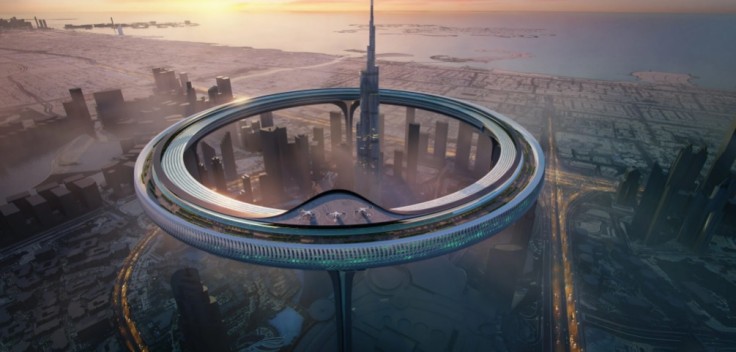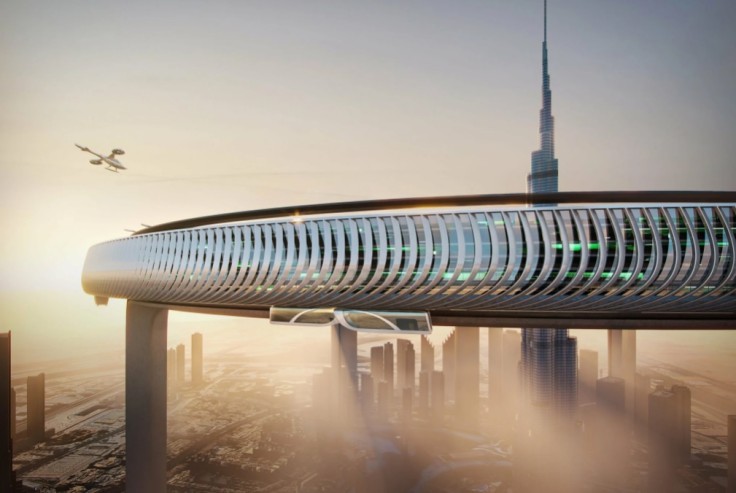
Another sci-fi-looking building might be on the horizon for the United Arab Emirates city of Dubai.
Dubai architectural firm ZNera Space has recently proposed a more futuristic urban and natural landmark in the country, per Interesting Engineering.
If construction is approved and finished, the building is expected to encircle the Burj Khalifa 1,800 feet above Dubai's landscape, per Design Boom.
Downtown Circle Features And Specifications

ZNera Space mentioned in an interview with Design Boom that its latest architectural design for Dubai will "drastically redefine" Dubai's skyline with an "elevated hyper-efficient urban center."
The concept in question, titled Downtown Circle, is a 1,800-foot ringed vertical city that encircles the Burj Khalifa, the tallest free-standing tower in the world.
The structure will be supported by five vertical beams that will be sturdy enough to hold it in place even in natural phenomena like earthquakes and tsunamis.
According to Architectural Digest's article, the Circle is ZNera Space's answer to the need for an alternative to the traditional gated societies and high-rise residences found in most metropolitan cities.
The idea for such a proposal came during the COVID-19 pandemic when people in the cities had their lifestyles altered due to the various quarantines and lockdowns, ZNera Space said.
It is designed to have a circumference of 9,800 feet and will introduce a "singular mix-use, megastructure" that can be used as a new urban and natural landmark for the country.
The Downtown Circle's interior is designed to be spacious enough to host all typologies that make up a typical urban metropolis. These include residential, public, and commercial spaces.
ZNera Space wants the Circle to be a self-sufficient, sustainable vertical urban center to emulate nature and create "diverse public spaces." As such, it will divide the ring into five levels to create a range of residential, public, commercial, and cultural programs.
As a result of this division, people living in the Circle can expect a garden to provide them clean oxygen while inside, dynamic urban functions from offices, research centers, cultural spaces, and residential areas.
The Circle's third, or middle level, will be made up of the Circle's Skygarden and Skypark, which would provide its denizens with clean, fresh air, natural light, and a panoramic view of Dubai.
It even boasts "diverse climates" and natural habitats simultaneously. Furthermore, ZNera Spaces will embellish this level with features that include swamps, waterfalls, canyons, and even tropical vegetation.
It would even become the breadbasket of the entire Circle, with the architectural firm's design making space for food production, rainwater harvesting, solar power stations, and systems for storing carbon and filtering pollutants from the air.
Getting Around The Circle

To further emphasize its sustainability and self-sufficiency, ZNera Spaces also added a futuristic rail transport system made of suspended pods traveling 62 miles per hour around the urban and natural landmark.
The rail transport system is capable of getting passengers from one node to another along the outer perimeter of the Circle's lowest tier and would allow the residents within to see Dubai from below.









